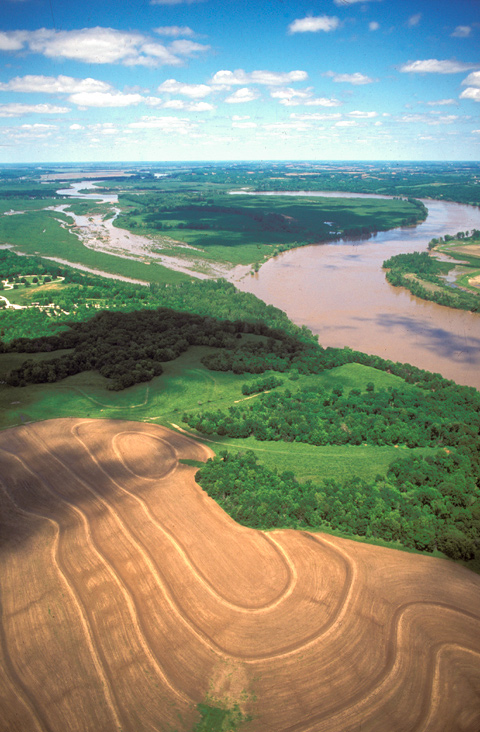It was a hard and dangerous day’s work getting past the wooded bluff called Arrow Rock (center of photo) on 9 June 1804. Driven by a strong current, the river was about three hundred yards wide and full of treacherous hazards. The barge struck one of the drifting logs, then caught on a cluster of them. It was a “disagreeable and Dangerous situation,” wrote Clark.
Some of the men leaped into the water, swam ashore with a rope, and pulled the boat out of harm’s way. “I can Say with Confidence,” Clark declared proudly, “that our party is not inferior to any that was ever on the waters of the Missoppie.”
After the expedition, in 1807, Clark would pass through here again, en route to build Fort Osage. He would remark on Arrow Rock as “a handsome Spot for a town.” The place was destined to become the first jumping-off point for westering settlers and entrepreneurs, the beginning of the Santa Fe Trail, pioneered by William Becknell in 1821. In 1829, a trader named Marmaduke platted a town here, which with typical frontier hubris he called New Philadelphia, but the name soon reverted to Arrow Rock.
From Discovering Lewis & Clark from the Air
Photography by Jim Wark
Text by Joseph Mussulman
Reproduced by permission of Mountain Press
Experience the Lewis and Clark Trail
The Lewis and Clark Trail Experience—our sister site at lewisandclark.travel—connects the world to people and places on the Lewis and Clark Trail.
Discover More
- The Lewis and Clark Expedition: Day by Day by Gary E. Moulton (University of Nebraska Press, 2018). The story in prose, 14 May 1804–23 September 1806.
- The Lewis and Clark Journals: An American Epic of Discovery (abridged) by Gary E. Moulton (University of Nebraska Press, 2003). Selected journal excerpts, 14 May 1804–23 September 1806.
- The Lewis and Clark Journals. by Gary E. Moulton (University of Nebraska Press, 1983–2001). The complete story in 13 volumes.


